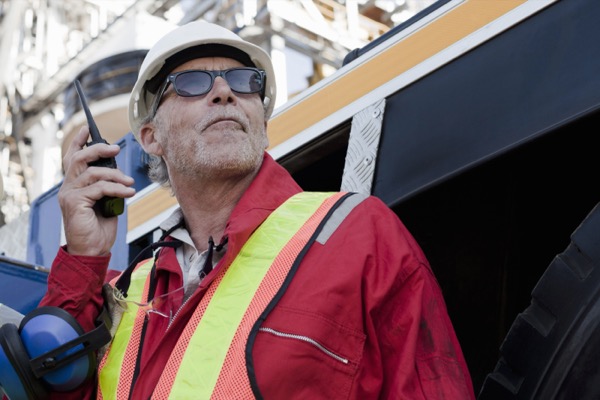Winter is a beautiful season, but its impact on the worksite can also be challenging. From freezing temperatures and harsh weather conditions to equipment failures and increased safety hazards, winter can have a significant impact on productivity, morale, and even the bottom line. In this article, we’ll explore the key ways that winter can impact the worksite and offer practical tips to help you prepare and minimize disruption.
Understanding the Challenges of Winter on the Worksite
Winter weather can pose a number of challenges for worksites, including:
- Snow and ice buildup
- Reduced visibility
- Frozen pipes and equipment failures
- Increased safety hazards, such as slips and falls
- Decreased morale and productivity
Snow and Ice Buildup
Snow and ice buildup can be a major issue for worksites, particularly for outdoor operations. Snow and ice can make it difficult to access equipment and materials, and can also present a safety hazard for employees. To minimize the impact of snow and ice buildup, it’s important to have a plan in place to clear sidewalks, driveways, and other areas regularly. This may involve investing in snow removal equipment or hiring contractors to handle the task.
Reduced Visibility
Reduced visibility can also be a major concern during winter. Snow, ice, and fog can all reduce visibility, making it difficult for employees to see each other, equipment, and hazards. To minimize the impact of reduced visibility, it’s important to ensure that all worksites have adequate lighting and to provide employees with reflective gear to increase their visibility.
Frozen Pipes and Equipment Failures
Frozen pipes and equipment failures are common during winter, particularly in areas with harsh winter weather. Frozen pipes can cause water damage, while equipment failures can lead to costly downtime. To minimize the impact of these issues, it’s important to winterize equipment and pipes and to keep them adequately insulated.
Increased Safety Hazards
Winter weather can also increase the risk of safety hazards, such as slips and falls. To minimize the impact of these hazards, it’s important to provide employees with proper training and equipment, such as slip-resistant shoes and ice grips. Additionally, worksites should be regularly inspected for hazards and any necessary safety precautions should be taken.
Decreased Morale and Productivity
Winter weather can also have a negative impact on employee morale and productivity. Cold temperatures, harsh weather conditions, and increased safety hazards can all contribute to decreased morale and productivity. To minimize the impact of these issues, it’s important to provide employees with adequate breaks, warmth, and resources to stay safe and comfortable during the winter months.
Preparing for Winter on the Worksite
To minimize the impact of winter on the worksite, it’s important to be prepared. Some key preparations include:
- Winterizing equipment and pipes
- Stockpiling supplies and materials
- Providing employees with proper training and equipment
- Clearing sidewalks, driveways, and other areas regularly
- Regularly inspecting worksites for hazards and taking necessary precautions
Winterizing Equipment and Pipes
Winterizing equipment and pipes is essential to minimize the impact of winter on the worksite. This involves insulating pipes, draining water from equipment, and taking other steps to protect against freezing temperatures and harsh weather conditions.
Stockpiling Supplies and Materials
Stockpiling supplies and materials can help minimize the impact of winter on the worksite by ensuring that you have what you need on hand, even in the event of a snowstorm or other weather-related disruption. This may include extra supplies, tools, and materials, as well as backup equipment and supplies.
Providing Employees with Proper Training and Equipment
Providing employees with proper training and equipment is essential for ensuring their safety during winter weather. This may include training on how to safely operate equipment in winter conditions, as well as providing slip-resistant shoes, ice grips, and other equipment to help prevent slips and falls.
Clearing Sidewalks, Driveways, and Other Areas
Clearing sidewalks, driveways, and other areas is critical for ensuring that employees can access the worksite safely during winter weather. This may involve hiring contractors or investing in snow removal equipment to keep areas clear and safe for employees.
Regularly Inspecting Worksites for Hazards
Regularly inspecting worksites for hazards is essential for minimizing the impact of winter weather. This may involve checking for slippery areas, ice buildup, and other hazards, as well as taking necessary precautions to keep employees safe.
Frequently Asked Questions About Winter’s Impact on the Worksite
- How can I minimize the impact of winter weather on my worksite? To minimize the impact of winter weather on your worksite, it’s important to be prepared. This may include winterizing equipment and pipes, stockpiling supplies and materials, providing employees with proper training and equipment, clearing sidewalks and other areas, and regularly inspecting the worksite for hazards.
- What steps can I take to keep my employees safe during winter weather? To keep your employees safe during winter weather, it’s important to provide them with proper training and equipment, including slip-resistant shoes and ice grips. Additionally, worksites should be regularly inspected for hazards and necessary precautions should be taken to keep employees safe.
- How can I ensure that my worksite is accessible during winter weather? To ensure that your worksite is accessible during winter weather, it’s important to clear sidewalks, driveways, and other areas regularly. You may also need to invest in snow removal equipment or hire contractors to help keep areas clear and safe for employees.
Conclusion
Winter weather can have a significant impact on worksites, from reduced visibility and increased safety hazards to frozen pipes and equipment failures. By being prepared, providing employees with proper training and equipment, and regularly inspecting worksites for hazards, you can minimize the impact of winter weather and keep your team safe and productive. Stay warm, stay safe, and remember: the winter’s impact on the worksite can be managed with a little bit of preparation and effort.







